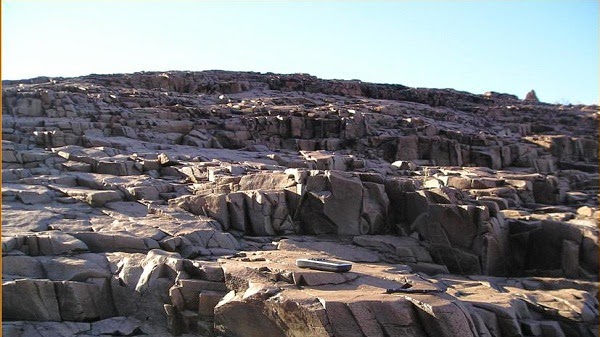
Volcanic eruptions across a vast area of what is now Western Australian and the Northern Territory 510 million years ago caused the first known mass extinction of complex life forms.
Curtin University’s Dr Fred Jourdan says it is widely documented that the Early-Middle Cambrian extinction of complex multicellular life was related to changes in climate and depletion of oxygen in the oceans but the exact cause has been unknown until now.
He is part of an international team of scientists that calculated a near perfect chronological correlation between large volcanic eruptions, climate changes and mass extinction over the history of life during the last 550 million years.
The eruptions produced rapid fluctuations in climate making it difficult for species to survive.
The research team’s findings High-precision dating of the Kalkarindji large igneous province, Australia, and synchrony with the early–Middle Cambrian (Stage 4–5) extinction, have been reported in the journal Geology.
The paper concludes the likely factors responsible for the Early–Middle Cambrian extinction are rapid climate shifts triggered by volcanic eruptions emitting mantle gases sulphur dioxide and greenhouse gases methane and carbon dioxide, either dissolved in the magma or generated by the interaction between magma and evaporite layers and/or oil-rich rocks.
Primative ocean life
Since there was no existing fauna or flora on land during the period, the extinction mechanism must have acted on the oceans.
Life at that time would have included the reef building sponge-like organism Archaeocyathids and Trilobites, the most primitive groups.
Dating techniques
The team used high-precision 40Ar/39Ar and U-Pb mineral dating to measure the age of eruptions in the Kalkarindji volcanic province in the Northern Territory and Western Australia where lavas covered more than two million square kilometres.
Both techniques are based on completely different elements and give the same age for the lavas, which is a strong validation that the age is correct.
Insights into gas emission effect
Dr Jourdan says the research is vital to understanding the long term implications that modern-day massive gas emission into the atmosphere can have on the climate and life.
“I’m talking about greenhouses gases like methane and carbon dioxide which warm the climate and sulphur dioxide which can cool the climate for short periods of time but more relevant to now, can cause acid rains which can wreck ecosystem and massive toxic pollution; part of the irritant pollutants in Beijing come from sulphur dioxide.
“…we can see the effect of those gases on nature by studying the rock record, and we are injecting a massive amount of those into the atmosphere, mostly by burning fossil fuels like coal and oil.”
More information: F. Jourdan, K. Hodges, B. Sell, U. Schaltegger, M.T.D. Wingate, L.Z. Evins, U. Söderlund, P.W. Haines, D. Phillips, and T. Blenkinsop. “High-precision dating of the Kalkarindji large igneous province, Australia, and synchrony with the Early–Middle Cambrian (Stage 4–5) extinction.” Geology, G35434.1, first published on April 24, 2014, DOI: 10.1130/G35434.1
Note : The above story is based on materials provided by Science Network WA










